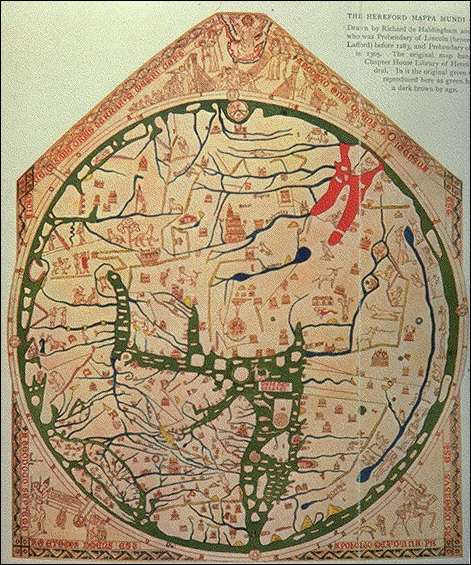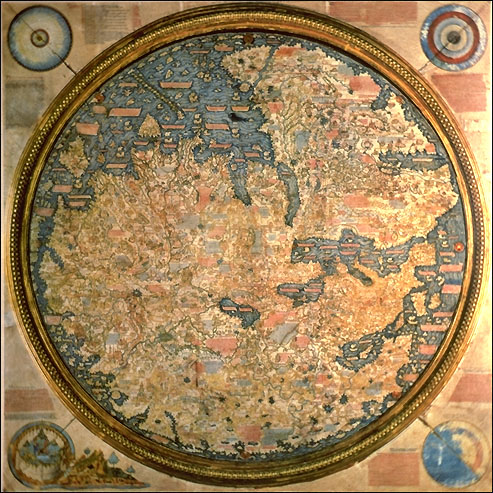 The
Hereford Mappamundi
The
Hereford Mappamundi
DATE: ca. 1290 A.D.
AUTHOR: Richard de Bello
DESCRIPTION: This is the largest map of its kind to have survived in tact
and in good condition from such an early period of cartography. It has
been preserved in the Hereford Cathedral (England) for almost 700 years,
and, besides its antiquity, it is notable for the quality of its workmanship
and for the variety of the drawings which adorn it. For this map the entire
entire skin of a calf had to be properly treated to make writing and coloring
possible. Calfskin prepared in this manner is called vellum (from the
Latin word vitulus, a calf). The vellum, measuring 1.65 X 1.35 m, is attached
to a framework of oak, the actual map being set in a 1.32 m diameter circle.
Although it bears no date, it is possible, from what is known of Richard's
life and from a study of the map, to say that in its present form it was
probably finished between 1285 and 1295. Image source: Henry
Davis Consulting.

.jpg) EUROPA
delineata et recens edita
EUROPA
delineata et recens edita